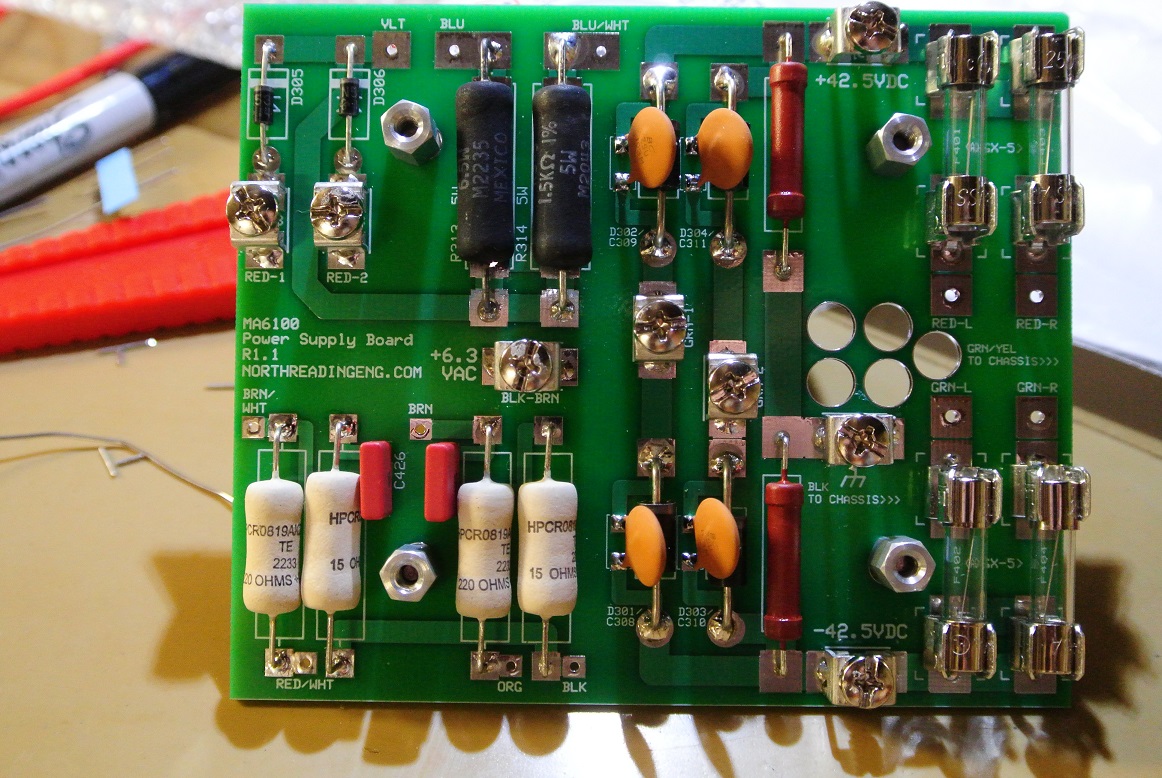
John Warren
Regulars-
Posts
2263 -
Joined
-
Last visited
-
Days Won
1
Content Type
Forums
Events
Gallery
Everything posted by John Warren
-
-
Shown below, the reason nearly 40% the US population is obese and we're in a T2D crisis in this country. They want you sick.
-
Diabetes and blood sugar, a story for those that struggle with it.
John Warren replied to John Warren's topic in Lounge
Yes, I know where you're coming from. Even guys I know with T2D with A1C in 7s and on meds eat like they're teenagers. Oh yea, I love all forms of carbs, a classic carboholic. As Monty mentioned, I really don't miss them although it did take some getting used to. The wife was never really a big carb type which has been very helpful. What's been interesting is I've upped the red meat and expected to see a bump in the cholesterol numbers but nothing yet. Still working at 74? I honestly hope you enjoy what you're doing! Agreed. Not sure it's reversible either but we shall see. That said, thank you all for the words of encouragement! The other "trick" that's been working for me is making the morning run real early, like 6:30AM and making it a short duration, low preperation thing. I can do about 2.8mi. in 35min so it's no real time killer and easy to implement. Get up, coffee, read WSJ, NYTs (online), dress in running outfit and just go. -
For those of you struggling with sugar diabetes, a story. I've retired from full time engineering work about 6 months ago. Devoting a ton of time to amplifier design. One health issue that's always hassled me was blood sugar levels, A1C numbers hovering between 6.1-6.3%. Wasn't obese but always in the 25-27 BMI range. I'm 65y/o. I don't want to get T2D, it effects vision, hearing and motor function not to mention hammers the immune system. About two years ago, I went practically no carb. And, after about 6 months of that. dropped 30 lbs. In my little world, no carb means no pasta, no rice, no grains, no breads, no sugar and no to most fruits. For many people it's very restrictive and given this stuff's in everything, difficult. For me it was an experiment. Basically, when you come to the realization that white bread or whole wheat bread or brown rice or heart healthy plain oatmeal all turn into a gelatinous, sugar-rich "mass" in your gut, you start to get the picture. And don't take my word for it, just get a BG pin prick monitor and measure the results after eating say a cup of plain, "heart healthy" oatmeal with a bit of cinnamon and 1/2 a banana. There's NOTHING healthy about a spike from 102 before to 155 after, it's damaging and boosting the average BG levels. Not good. After about 18 months (15 Oct 2022) of no-carb living my A1C was 6.0, a small trend towards better but nothing to get excited about. Hence, no-carb was only part of the solution. I was eating lots of meats, vegetables, nuts (I'd even strip all the cheese and toppings off pizza and toss the pie!). Greasy stuff, except for processed meats are ok however. New strategy was needed. With a BMI of 22.5 thanks to no carb and a good EKG, in July I started running each and every day. First just to the end of the street, then a wee-bit more until about three months ago I was able to jog about 3mi each morning. Today, I can run at full stride over the same route. Many changes occur in the body, it transforms. Last week, I had a physical so some data share: The takeaway for me was it took three changes to get to a normal A1C 1. No-Carb enables weight loss 2. Weight loss enables running 3. Running lowers average BG levels Even today, my 12h fasting BG isn't great at 115 BUT after a run it drops to low 90s which, averages out to good A1C numbers (A1C is a 3 month average). That all said, there's hope if you want to reverse the trends. It's no easy but if I can do it, any clown can.
-
I used the polypropylene orange drops (715P series) to replace the American Radionics foils. Tubes were new EL84M Sovteks. I thought the amp sounded respectable.
-
Sovteks have been available for some time. Purchased 4 5AR4s, 10 12AX7s earlier this year. Just purchased a quad of EL84Ms too, supplier as 90+ is stock. So much for the Russian import ban.
-
On the rectifier replacement, the 12AX7 filament string should read ~ -72VDC without tubes and with all four plugged in drop to -55VDC. If one tube socket is dodgy the whole string is out of commission and none will light, they're in series. It's not uncommon to have the original 12AX7s in these amps, they last forever. They were shipped with Telefunken. That got a chuckle out of me!
-
The first place to start, assuming the power supply transformer is ok. is to pull all the tubes and go after the three electrolytic multicaps, all three need to be replaced with either replacements (Hayseed Hamfest does a nice job) or discrete assembilies under the chassis. Don't bother "reforming" or some other foolish thing. One must first get all the DC rails up to snuff. Replace all the carbons with ceramic compositions then get rid of the selenium rectifier. These amplifiers are very straightforward to service but can also be a ticket to an early grave so ground your chassis and check the fuse first before you go in. Updated link. Scott 222C (ipage.com)
-
This was common given that most manufacturers would just fold a long sheet of glass and stuff it into the enclosure. You should have left the glass in, much, much superior to the plastic crap.
-
"Before I tell you about the sound..." The starting line of the snake-oil salesman.
-
Another vintage classic for service. Will document in the page below for those of you interested in this sort of thing. The interior wiring appears to be factory virgin, i.e. no one was ever in there. It's a wee bit dirty and the multi caps, the selenium rectifier are shot so first thing is to get the power supply proper. The power supply transformer is good. Scott 222C (ipage.com)
-
Thank you.
-
Capacitance changes with changes in frequency, voltage, humidity and temperature between the two "film" types are significant. Companies like WIMA, KEMET, Vishay and many others have factories dedicated to the fabrication of either polyester or polypropylene film caps. There's manuals, application and usage guidelines specific to each type. The selection of the wrong film in many applications (power supplies as one example) will determine the failure rate. The point being, it really does matter.
-
Here's the revised design (R1.1). A bit tidier. The caps can be ceramic disk of film type. Caps across rectifiers should be either ceramic disk or polypropylene. I kept the ceramic disks because I have them. If they're film, the must be polypropylene given the application. It's a significantly better dielectric than polyester, far better insulation and dielectric behavior. The board will accommodate a WIMA PCM5 AC pulse type. For the output stage RC filter a WIMA general purpose polyester (PET) is ok and what's installed. It's also in the PCM5/7.5mm package replacing the ceramic disk (easier to install and I have them). Polyester caps are fine for decoupling and noise suppression and they're low cost. They pick up moisture and that changes the behavior as a function of frequency. They have rates about 40X higher than polypropylene. As a general rule you can replace polyester with polypropylene but not the other way around.
-
Awesome, thanks! Next questions, how can this relatively simple design be improved? There are a few modifications that can be made but there's also space constraints. That requires going to the simulator. Will detail that on the forum below. MA6100 Power Supply Board (northreadingeng.com)
-
Thank you. On the difficulty scale this board is a fairly straightforward effort. I also have a few design tools that help in identifying trouble spots before I commit funds to board production. I do have a second iteration of the board designed but will wait until I have another 6100 in for service before ordering it. One more photo of the installation:
-
This was a cool project. Gent purchases an MA6100 from an estate sale. The amp is new, never used, still wrapped in plastic bag but it's missing the power supply board. So he needs a board and contacts me. I do not have these boards just lying around. There's two ways to solve this, buy a "donor" amplifier and hope it has a good board or design a new one. When he sent me an email, I intially said I wasn't interested. We chatted a bit more and I decided to do it and, as it turns out, wasn't really that difficult. Since I too own a 6100 I decided to design a board for my unit and his. So here's the factory original: And the replacement: Board pulled from the amplifier: Board ready for install:
-
Maybe You Have A Juicy Question?
John Warren replied to RealMarkDeneen's topic in 2-Channel Home Audio
I've serviced a Peach II, specifically the filament section that provides AC-DC conversion to source VDC to the small signal heaters. In my case, this was a relatively straightforward effort, a few hours. If your unit stops working and the tubes (except the rectifier) are cold, it may be the power supply sourcing to the filaments. Also, the filaments are in parallel so if two are bright and one dead, suspect the tube, the curcuit is ok. I've documented the servicing here. Juicy Music Peach II Preamp (northreadingeng.com) -
Significant experience.
-
Good question. The solid-state amps today are vastly more complex than the first-generation units. Their business model is primarily selling new, solid-state amps. Having a revised solid-state design (a few op-amps and tweaks) that's basically 50+ years old sound as good as the hardware they make today would be a marketing nightmare. The "sweet sound" of a hand-full of transistors vs. 2000+ transistors is said by no one. It would be problematic, contradictory. And thank you!
-
-
Why buy a Mc 275 when you can have one of these!
John Warren replied to michaelwjones's topic in Talkin' Tubes
The rule of law is a Western idea. -
























